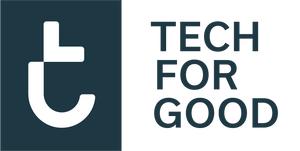Australian Sustainability Reporting Standards
– The New Reporting Standard
The Australian Sustainability Reporting Standards represent the most significant change to corporate reporting in more than a decade. Legislated through amendments to the Corporations Act in 2024, these standards embed climate-related disclosures directly into audited financial reports for the first time.
-
- Effective from financial years starting 1 Jan 2025.
- Mandatory disclosure (AASB S2): Climate-related financial disclosures included in audited reports.
-
Scope covered:
- Scope 1 & 2 (NGERS methodology allowed).
- Scope 3 (supply chain, ICT procurement, packaging, logistics, financed emissions, end-of-life).
- Governance, risk, strategy, targets, and scenario analysis.
- Penalties: Civil fines up to ~$626k, daily penalties, director liability, criminal charges for false data.
-
-
Phased rollout:
- Group 1 (FY25): ≥ $500m revenue, ≥ 500 staff, or NGERS facility ≥ 100k tCO₂-e.
- Group 2 (FY26): ≥ $200m revenue, ≥ 250 staff.
- Group 3 (FY27): ≥ $50m revenue, ≥ 100 staff.
- Assurance: Limited assurance from day one → full reasonable assurance by 2030.
- Liability: Overseen by ASIC; directors personally accountable for disclosures under the Corporations Act.
- Why it matters: Climate reporting becomes public, auditable, and comparable — raising the bar for ESG data integrity.
-
Phased rollout:
Why this matters for ICT procurement
Technology purchases, cloud services, logistics, and end-of-life recycling sit inside Scope 3 emissions. Choosing suppliers who provide auditable data and circular IT outcomes ensures ICT spend supports compliance under the Australian Sustainability Reporting Standards.

National Greenhouse and Energy Reporting – The Current Framework
The National Greenhouse and Energy Reporting scheme, legislated in 2007, remains Australia’s cornerstone emissions compliance regime. It provides the statutory baseline for reporting greenhouse gas emissions and energy use, covering direct (Scope 1) and indirect electricity-related (Scope 2) emissions.
- Introduced in 2007 under the NGER Act. NGERS is foundational but incomplete — it covers only Scope 1 and Scope 2, not Scope 3.
- Scope covered: Scope 1 (direct emissions) + Scope 2 (purchased energy).
- Scope covered: Scope 1 (direct emissions) + Scope 2 (purchased energy).
- Obligations: Annual self-assessment, register by 31 Aug, report by 31 Oct via CER’s EERS portal.
- Penalties: Civil fines up to ~$626k, daily penalties, director liability, criminal charges for false data.
- Why it matters: NGERS data underpins the National Greenhouse Accounts and feeds into broader ESG reporting.
Key Dates & Thresholds at a Glance
| Framework | Scope | Who Reports | Deadlines |
|---|---|---|---|
| ASRS (AASB S2) | Scope 1, 2 & 3 + governance/targets includes Scope 3 ICT procurement disclosures |
Group 1: FY25; Group 2: FY26; Group 3: FY27 |
Annual financial reporting cycle |
| NGERS | Scope 1 & 2 | Facilities ≥25k tCO₂-e OR Groups ≥50k tCO₂-e | Register: 31 Aug; Report: 31 Oct |
| ASSA Assurance | Independent verification | All ASRS reporters | Phased → full by 2030 |
| ASIC Oversight | SG disclosure integrity | All reporting entities | Ongoing |


